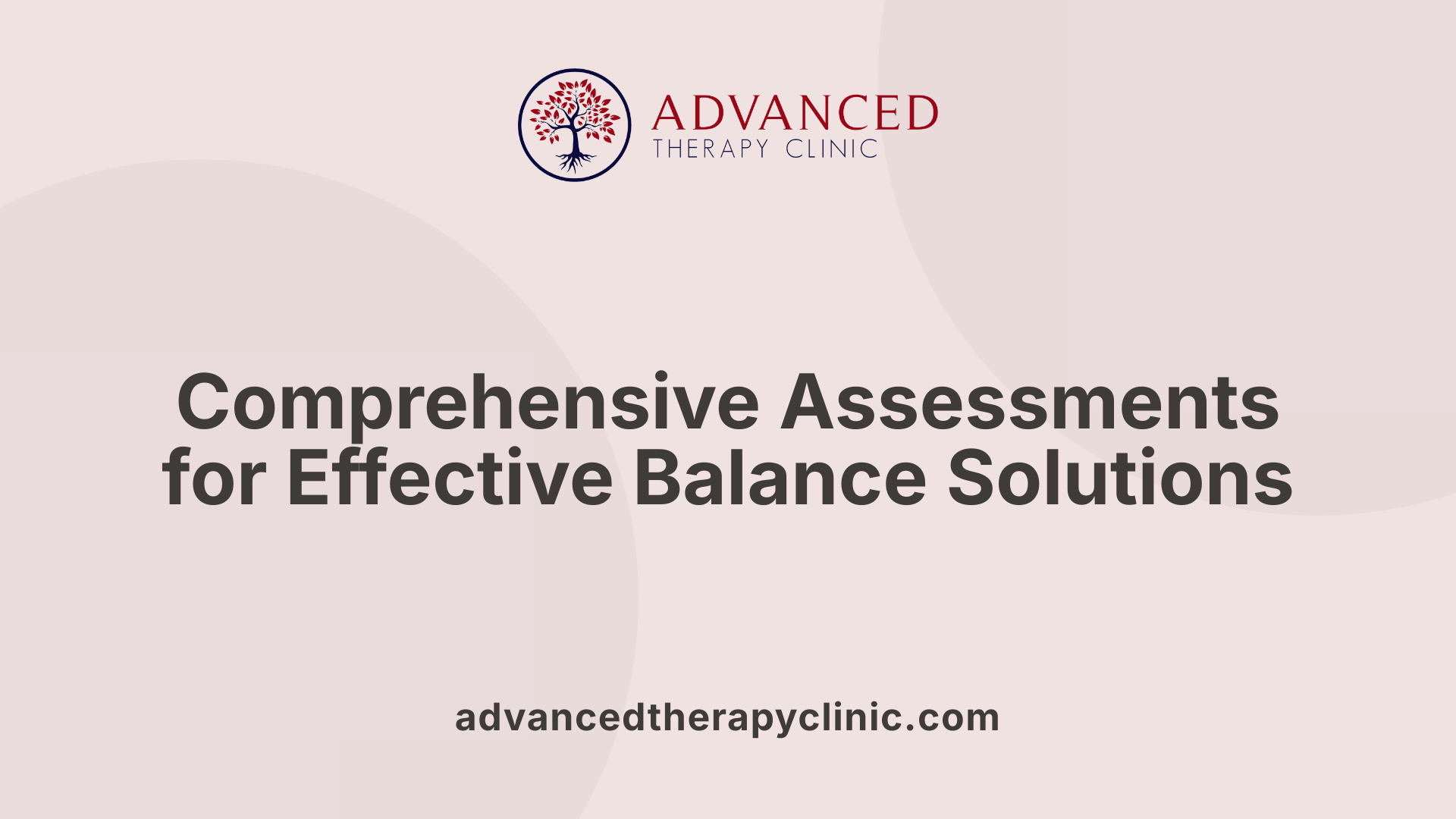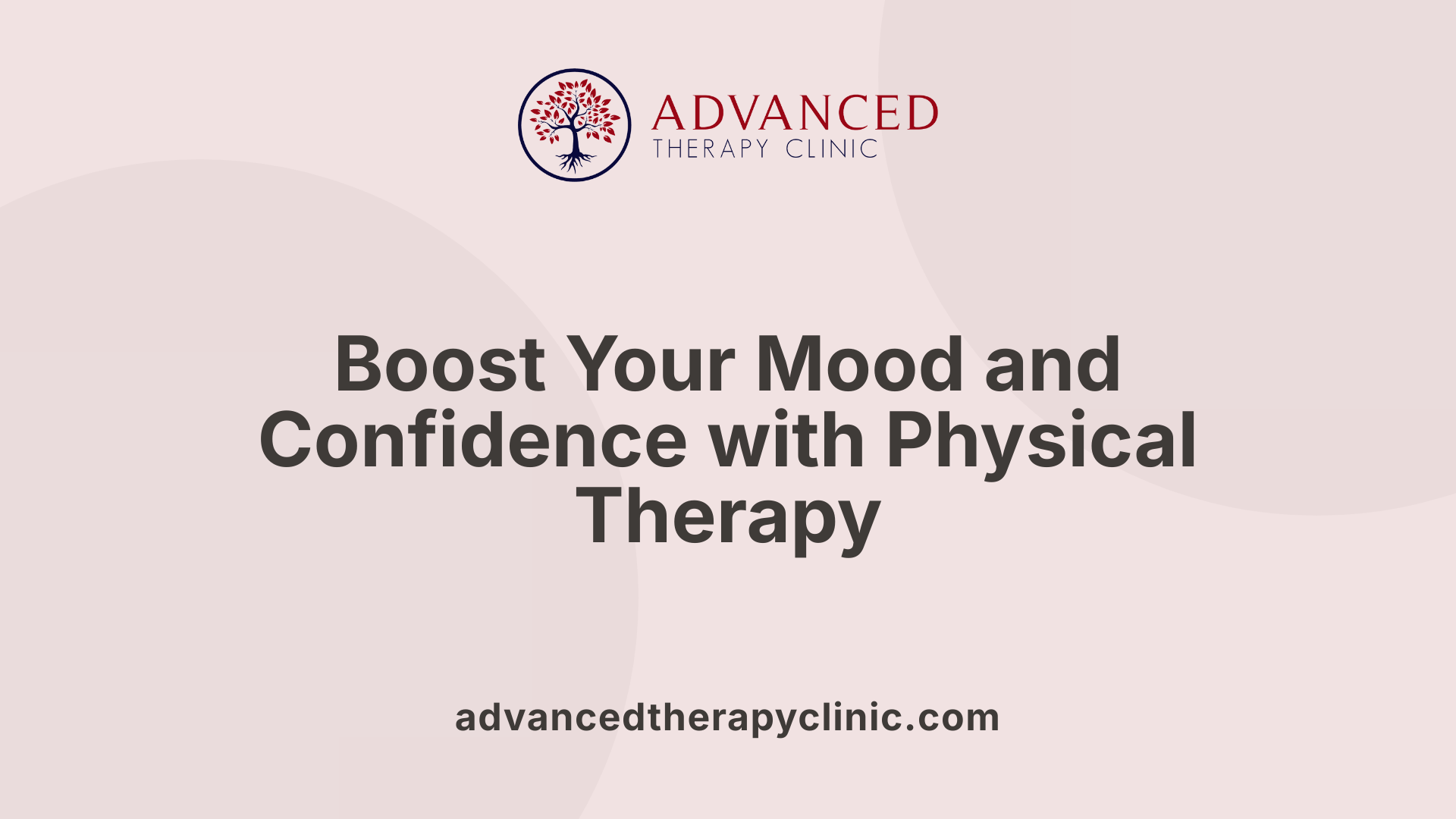How Physical Therapy Helps with Posture and Balance


Understanding the Importance of Posture and Balance
Posture and balance are foundational aspects of our physical well-being, influencing everything from mobility to overall health and quality of life. Many people, particularly older adults, face challenges related to balance and postural dysfunction, which can lead to discomfort, reduced independence, and increased risk of injury. Physical therapy emerges as a critical intervention, offering targeted approaches that improve stability, correct postural issues, and restore confidence. This article explores how physical therapy addresses these challenges through customized exercises, rehabilitation strategies, and comprehensive assessments, ultimately enabling individuals to reclaim their mobility and reduce the risk of falls and pain.
Common Causes and Symptoms of Balance and Postural Issues
What are the causes of balance issues?
Balance problems arise from various factors including aging, neurological conditions like Parkinson’s disease and multiple sclerosis, vestibular disorders such as Ménière’s disease, injuries, medications, and vision impairments. As people age, the natural decline in muscle strength, sensory function, and coordination contributes significantly to balance challenges.
What symptoms indicate balance impairment?
Individuals experiencing balance issues often feel unsteady or dizzy. Symptoms can include vertigo, a sensation of floating or disconnection from surroundings, and increased risk of falls. These symptoms negatively impact daily mobility and confidence, especially among older adults.
What are the signs and causes of postural dysfunction?
Postural dysfunction involves misalignment or imbalance of musculoskeletal structures, leading to discomfort and pain. Common signs include persistent neck, shoulder, and back pain, muscle tension, fatigue, limited mobility, and poor balance. Causes range from sedentary lifestyles and muscle imbalances to poor ergonomics, injuries, and structural abnormalities like scoliosis or kyphosis.
Understanding these causes and symptoms is essential for effective assessment and intervention through physical therapy, which aims to restore balance and proper posture, ultimately enhancing quality of life.
Physical Therapy’s Role in Assessing and Diagnosing Balance and Postural Problems

How Do Physical Therapists Assess Vestibular Problems?
Physical therapists evaluate vestibular problems by observing a patient’s balance, dizziness symptoms, and eye movements. They often use gaze stabilization exercises and head movement tests to detect vestibular dysfunction. This helps identify issues contributing to dizziness and instability, allowing therapists to design vestibular rehabilitation therapy (VRT) tailored to improve balance and reduce fall risk.
How Are Proprioception Deficits Evaluated?
Proprioception, the body’s ability to sense position and movement, is crucial for balance. Therapists assess proprioception by testing joint position sense and the ability to maintain balance on unstable surfaces. Exercises like one-legged stands or tandem balance help reveal deficits, guiding treatment plans focused on improving sensory input and control.
What Methods Are Used to Detect Muscle Weakness?
Muscle strength assessments involve manual muscle testing and functional movement analysis. Therapists identify weakness, especially in the lower extremities and core, which are essential for stability and posture. Once pinpointed, strengthening exercises such as standing marches, knee curls, and side-stepping are prescribed to enhance muscle performance and support balance.
Which Techniques Are Included in Postural Assessments?
Postural assessment techniques focus on evaluating the alignment of musculoskeletal structures. Physical therapists observe posture for misalignments that cause pain, fatigue, or balance problems, checking areas like the neck, shoulders, and back. They may use tools like plumb lines or digital analysis to measure deviations from good posture, then recommend corrective exercises including chin tucks, cat-cow stretches, and core-strengthening movements.
Physical therapists combine these assessments to create personalized treatment programs aimed at improving balance, reducing fall risk, and correcting posture-related dysfunctions. This comprehensive approach ensures targeted rehabilitation based on individual patient needs.
Targeted Exercises and Techniques to Improve Balance
What is gait training and how does it help balance?
Gait training is a specialized physical therapy technique that focuses on improving walking patterns to enhance stability and coordination. It helps patients regain normal movement and reduce fall risk by strengthening lower limbs and promoting proper posture during walking.
How does perturbation-based training enhance balance?
Perturbation-based training involves controlled, unexpected movements or shifts that challenge a person's balance. This training boosts the body's ability to react quickly and maintain stability in real-life situations where balance might be disrupted.
What is vestibular rehabilitation therapy (VRT)?
Vestibular rehabilitation therapy is a targeted treatment designed to address dizziness and balance problems caused by inner ear disorders. VRT uses specific exercises, including gaze stabilization and habituation techniques, to reduce dizziness and improve overall balance and stability.
What static and dynamic balance exercises are commonly used?
Physical therapists utilize a mix of static (holding a position) and dynamic (moving while maintaining balance) exercises to improve balance. Examples include one-legged stands (static) and side-stepping or standing marches (dynamic). These exercises train muscle control and improve proprioception.
What specific exercises can improve balance effectively?
Among the effective balance exercises are toe stands, side-stepping, knee curls, one-legged stands, weight shifts, tandem balance, and standing marches. These exercises target different muscle groups and help increase strength, coordination, and stability.
These techniques, when tailored to individual needs, form the foundation of an effective physical therapy program aimed at improving balance, reducing falls, and enhancing mobility.
| Exercise Type | Description | Purpose |
|---|---|---|
| Gait Training | Practicing walking patterns | Enhance walking stability and coordination |
| Perturbation Training | Controlled balance disruptions | Improve reactive balance and fall prevention |
| Vestibular Rehabilitation | Exercises targeting inner ear balance system | Reduce dizziness and improve vestibular function |
| Static Balance | Exercises like one-legged stands | Improve stability by holding positions |
| Dynamic Balance | Activities like side-stepping, marches | Enhance balance during movement and changes in position |
Strategies to Correct Postural Dysfunction through Physical Therapy

What is postural dysfunction and what causes it?
Postural dysfunction refers to the misalignment or imbalance of the musculoskeletal structures, which can lead to discomfort, pain, and reduced mobility. Common causes include sedentary lifestyles, muscle imbalances, poor ergonomics, injuries or trauma, and structural abnormalities such as scoliosis or kyphosis. These factors often result in symptoms like persistent neck, shoulder, or back pain, muscle tension, fatigue, limited mobility, and poor balance.
How does manual therapy help postural dysfunction?
Manual therapy involves hands-on techniques performed by physical therapists to release muscle tension, improve joint mobility, and facilitate proper alignment. This approach helps alleviate pain and restore normal movement patterns, serving as a foundational step in correcting postural imbalances.
What therapeutic exercises improve posture?
Therapeutic exercises focus on strengthening muscles that support correct posture and enhancing flexibility. Examples include:
- Chin tucks: Promote cervical alignment and reduce forward head posture.
- Single-leg stands: Improve core stability and balance.
- Dead bugs: Strengthen deep core muscles essential for maintaining upright posture.
- Cat-cow stretches: Increase spinal flexibility and promote awareness of spinal alignment.
Why is ergonomic education important in postural correction?
Ergonomic education teaches individuals how to adjust their workspaces and daily habits to maintain proper posture throughout the day. By addressing poor ergonomics, patients learn to prevent strain and avoid exacerbating postural problems, aiding long-term maintenance of healthy alignment.
What methods are used for postural correction?
Physical therapists employ strategies such as:
- Postural re-education: Guiding patients to consciously adjust their alignment during various activities.
- Muscle rebalancing: Targeting overactive or weak muscles through tailored exercises.
- Breathing techniques: Enhancing diaphragmatic function and promoting better trunk stability.
How do flexibility and core strengthening contribute?
Improved flexibility, especially in the chest, shoulders, and hamstrings, helps reduce muscle tightness that pulls the body out of alignment. Core strengthening stabilizes the spine and pelvis, providing a solid foundation for proper posture. Consistent practice of these exercises, ideally 2–3 times per day, leads to lasting postural improvements.
By combining manual therapy, exercise, ergonomic adjustments, and focused correction methods, physical therapy offers a comprehensive approach to reversing postural dysfunction, reducing pain, and enhancing mobility.
Benefits of Improved Balance and Posture from Physical Therapy
How Does Physical Therapy Enhance Stability and Coordination?
Physical therapy employs specialized exercises like toe stands, tandem balance, and side-stepping to promote better stability and coordination. These activities help retrain the body’s sense of balance and spatial awareness, essential for everyday movements.
In What Ways Does Physical Therapy Increase Strength and Confidence?
Targeted strengthening exercises, such as knee curls and one-legged stands, build muscle groups that support balance. Over time, this muscle fortification boosts confidence, encouraging individuals to move more freely and independently.
How Does Physical Therapy Help Reduce Fall Risk?
By integrating gait training, vestibular rehabilitation, and perturbation-based techniques, physical therapy addresses underlying factors like muscle weakness, proprioception deficits, and vestibular dysfunction. This comprehensive approach significantly lowers the chance of falls, especially in older adults.
What Improvements in Mobility and Quality of Life Can Be Expected?
Enhanced balance and posture contribute to smoother, more controlled movements, enabling better mobility. Patients frequently report feeling more energetic and independent, which leads to a higher quality of life.
How Does Physical Therapy Contribute to Pain Reduction?
Postural correction exercises and manual therapy ease muscle tension and realign musculoskeletal structures. These interventions reduce chronic pain related to poor posture, fatigue, and muscle imbalances, allowing for greater comfort and activity tolerance.
Physical therapy's focus on balance and posture not only improves physical capabilities but also empowers patients through enhanced stability, strength, and wellbeing.
The Importance of Core Strength and Flexibility in Maintaining Balance and Posture

How do core strengthening exercises like dead bugs and single-leg stands help maintain balance and posture?
Core strengthening exercises such as dead bugs and single-leg stands play a crucial role in stabilizing the body. These exercises target the deep muscles of the abdomen and lower back, which support proper spinal alignment and reduce the likelihood of falls by improving balance and coordination.
How can flexibility improvements through stretching contribute to better posture?
Stretching exercises that focus on the chest, shoulders, and hamstrings enhance flexibility. Increased flexibility in these areas allows for a natural, upright posture, reducing muscle tightness and imbalances that can lead to postural dysfunction and discomfort.
What is the effect of posture on lung capacity and diaphragmatic function?
Good posture positively affects lung capacity and diaphragmatic movement, facilitating optimal oxygen intake. Conversely, poor posture can restrict lung expansion and diaphragmatic function over time, which may compromise respiratory efficiency and overall health.
How are core strength and flexibility related to postural and balance control?
Core strength and flexibility are intertwined in maintaining postural and balance control. A strong core provides a stable foundation, while flexibility permits smooth, controlled movements. Together, they help prevent postural misalignment and enhance balance, reducing the risk of falls and improving mobility.
Consistency and Customization in Physical Therapy Programs

How Are Physical Therapy Exercise Programs Tailored to Individual Needs?
Physical therapy programs are designed with personalization at their core. Therapists carefully assess factors such as muscle strength, balance issues, posture, and any underlying sensory impairments to create an exercise regimen tailored specifically to the individual's condition and goals. This customization ensures that each program effectively addresses unique challenges, whether related to balance, coordination, or postural dysfunction.
What Is the Recommended Frequency for Performing These Exercises?
To achieve noticeable improvements, consistency is vital. Physical therapy exercises like toe stands, one-legged stands, and weight shifts are often recommended to be performed 2 to 3 times daily. Regular practice strengthens stabilizer muscles, improves flexibility, and enhances overall stability, which collectively contribute to better posture and reduced fall risk.
How Do Physical Therapists Support Customized Plans?
Physical therapists play a crucial role by continuously monitoring progress and adjusting exercise programs as needed. They provide ergonomic education, manual therapy, and motivational support, helping patients stay on track. Their expertise allows them to fine-tune exercises based on improvements or emerging challenges, ensuring the therapy remains effective and safe throughout the recovery process.
Why Is Adherence to Physical Therapy Important?
Adherence ensures that patients fully benefit from their tailored therapy. Consistent engagement with prescribed exercises builds strength and confidence, preventing setbacks such as falls or injuries. Moreover, commitment to the therapy enhances mobility and quality of life, enabling individuals to maintain independence and enjoy better overall health.
| Aspect | Detail | Impact on Therapy |
|---|---|---|
| Tailored Programs | Designed based on individual assessment and goals | Addresses specific deficits effectively |
| Exercise Frequency | Recommended 2-3 times daily | Ensures continuous muscle strengthening |
| Therapist’s Role | Monitors progress, adjusts exercises, provides education and support | Maintains therapy relevance and effectiveness |
| Importance of Adherence | Regular participation in exercises and therapy sessions | Maximizes benefits, enhances recovery and mobility |
Physical Therapy for Injury Prevention and Fall Risk Reduction
Assessment of Fall Risk
Physical therapists begin by thoroughly assessing individuals to identify fall risks. This includes evaluating muscle strength, balance, flexibility, and coordination, which are critical elements that contribute to a person's stability. Special attention is given to aging adults who are at increased risk for falls due to natural declines in these areas. Through this assessment, therapists recognize specific weaknesses or impairments such as proprioceptive deficits or vestibular dysfunction that may affect balance.
Strength, Flexibility, and Coordination Training for Injury Prevention
Following the assessment, personalized training programs are designed to target muscle weakness and improve flexibility and coordination. Exercises like toe stands, tandem balance, standing marches, and weight shifts help build stability and muscle control. Strengthening exercises focusing on core muscles and lower extremities also play a central role in enhancing physical resilience, reducing the chance of falls and injuries.
Focus on Aging Adults
Older adults benefit significantly from these interventions due to naturally diminished muscle mass and balance. Physical therapy programs emphasize consistent practice of specific exercises to build confidence and enhance mobility, which is essential for maintaining independence and preventing injuries.
Integration of Balance Improvements in Everyday Safety
Beyond exercise, physical therapy incorporates balance improvements into daily activities and safety strategies. This holistic approach includes education on proper posture, ergonomic adjustments, and strategies for safe movement to reduce fall risk and improve quality of life. Maintaining these improvements consistently helps ensure lasting benefits that extend into everyday life.
Overall Impact of Physical Therapy on Mental and Emotional Well-being

How Does Physical Therapy Contribute to Stress Reduction and Increased Serotonin?
Physical therapy promotes physical activity, which naturally increases serotonin levels—the neurotransmitter responsible for mood regulation. This boost helps reduce stress and elevate overall mental well-being. Patients often find that consistent movement paired with structured therapy sessions provides a calming effect and supports emotional balance.
What Role Does Pain Education and Management Play in Therapy?
Physical therapists educate patients about their pain, helping them understand its nature and teaching strategies to manage it effectively. This approach reduces fear and anxiety associated with chronic pain, enabling patients to move more confidently and with less discomfort. Pain management tailored to individual needs enhances both physical and emotional recovery.
How Does Physical Therapy Empower Patients?
Physical therapy encourages active participation, giving patients control over their recovery journey. By learning exercises and techniques suited to their condition, patients gain tools to manage symptoms independently. This empowerment fosters a sense of accomplishment and confidence, which positively impacts mental health.
In What Ways Does Recovery Improve Confidence?
As patients observe improvements in strength, balance, and mobility, their confidence naturally grows. Recovery milestones achieved through therapy not only restore physical function but also boost self-esteem and independence. This enhanced confidence supports a more positive outlook on daily activities and health maintenance.
Summing Up the Transformative Power of Physical Therapy for Posture and Balance
Physical therapy is an essential and evidence-based pathway for individuals struggling with balance and postural dysfunction. Through precise assessment, targeted exercise regimens, and supportive rehabilitation techniques, physical therapy improves stability, reduces pain, and increases independence — ultimately enhancing overall quality of life. By addressing underlying causes such as muscle weakness, vestibular dysfunction, and impairment in proprioception, physical therapy not only restores physical function but also fosters confidence and mental well-being. Consistent, customized programs empower patients to take an active role in their health, making physical therapy a cornerstone for long-term balance and posture health.
References
Recent articles

Expressive Speech Delay 2-Year-Old
Understanding and Addressing Expressive Speech Delay in Toddlers

How Speech Recognition Works
Unlocking the Power of Speech Recognition in Therapy and Healthcare

Autism and Head Size
Understanding the Complex Relationship Between Autism and Head Size

Occupational Therapy in Autism
Enhancing Independence and Quality of Life Through Occupational Therapy in Autism

Do Autistic People Understand Sarcasm?
Navigating the Nuances: Understanding Sarcasm and Social Communication in Autism

Autism Routines
Crafting Effective Daily Structures for Children with Autism

